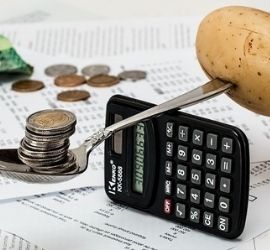What is a Reverse Auction?
 A Reverse auction is initiated by the buyer – usually large corporations and governments. Suppliers then bid in real-time driving the price down.
A Reverse auction is initiated by the buyer – usually large corporations and governments. Suppliers then bid in real-time driving the price down.
A reverse auction is a type of auction in which sellers bid for the prices at which they are willing to sell their goods and services. In a regular auction, a seller puts up an item and buyers place bids until the close of the auction, at which time the item goes to the highest bidder. In a reverse auction, the buyer puts up a request for a required good or service. Sellers then place bids for the amount they are willing to be paid for the good or service, and at the end of the auction the seller with the lowest amount wins.
Reverse Auction – A Deeper Look
Reverse auctions have been used in public procurement for almost two decades with varying degrees of success. For most buyers using the process, the main goal is to get the lowest possible price for a good or service. In turn, this drives down procurement costs and achieves additional savings. Large corporations and the federal government have been traditional users of online reverse auctions.
Reverse auctions gained popularity with the emergence of internet-based online auction tools. These enable multiple sellers to connect with a buyer on a real-time basis. Today, reverse auctions are used by corporations and large entities as a competitive procurement method. It enables low-cost procurement for raw materials, supplies, and services like accounting and customer service.
Types of Reverse Auction Format
The conventional wisdom is that reverse auctions are not suited for all commodities and services. However, for some commodities, a combination of competition and collaboration may be employed. There are different types of reverse auctions:
- English Reverse Auction – Suppliers strictly compete on being the lowest price in the market
- Global Reverse Logistics Auction – e-Auction specifically for negotiating logistics/transportation pricing.
- Insurance Reverse Auction – A reverse auction process flow specifically designed for negotiating insurance products.
- Energy Reverse Auction – Online auction sites that specialize in assisting companies who wish to reverse auction energy purchases for commercial and residential energy as well as reverse auction renewable energy.
- Reverse Dutch Auction – A type of auction where the buyer sets a low starting price and the price moves up in defined increments at defined time intervals. As soon as a supplier accepts the current price, the auction closes.
- e-Auction for Legal Services – Reverse Auction Software that can be configured to auction legal services provided by law firms Internet Reverse Auction works and helps companies save time as well as generates cost savings.
(Source: procureport.com)
Reverse Auction Advantages
There are many benefits of a reverse auction as listed below:
- Time – Save time in collecting bids from suppliers
- Transparency – Increased transparency in the bidding process; improving supplier relationships
- Cost – Savings ranging from 18% to 40%
- Security – Increased compliance and Data security provided by participating companies.
Reverse Auction Disadvantages
It is important to note that the reverse auction does not work for every good or service. Goods and services that can be provided by only a few sellers are not necessarily ideal for reverse auctions. In other words, the process works best when there are many sellers. Particularly, suppliers who offer similar goods and services to ensure the integrity of a competitive process.
- No guarantees – Do not always guarantee the lowest price.
- Quality vs price – It may encourage race-to-the-bottom prices. Can be detrimental to buyers, who may not get high quality and standards for the goods/services they acquire. And, can be detrimental to suppliers, who may have not assessed their cost appropriately.
- Short term vs long term – It can pose a threat to long-term supplier relationships over short-term sales.
- Metrics – Buyers have no valid method to measure savings. p
Reverse Auction Examples
Government contract bids
Government contracts for work to outside suppliers commonly use a reverse auction process. For example, if your company provides IT support to government agencies. Your company could respond to a request for a proposal from a government agency. Then, you submit a bid for the suite of services you provide. In this type of auction, governments specify requirements for the project and bidders, who are approved contractors, to come up with a cost structure to finish the project.
Manufacturing
Companies that manufacture their products often use the auction process to source suppliers. For example, if an aerospace company is sourcing suppliers to provide batteries for a new aircraft. Then, companies that make the needed battery could submit a bid to supply the item for aircraft production.
Technology services
Organizations, such as school districts or companies that do not have internal technical support. These organizations can use the reverse process to procure technology goods and maintenance services. The process enables competitive procurement for quality support and services.
Final Words
Are reverse auctions a win-win for both parties? If done right, they can be a win-win for both buyers and suppliers. The online reverse auction is a cost-effective way in which a single buyer procures goods or services from multiple bidders using an online bidding platform. Buyers and sellers should engage in reverse auctions as long as the right type is chosen for the appropriate goods or services. This will allow them to maximize their benefits. Reverse auctions can produce a mutually-beneficial outcome when they are not solely used to get the lowest price.
Price is often the key factor for buyers during the process. Unfortunately, buyers tend to base their final decision on pricing. However, the entire package a seller offers must be weighed as well. Buyers need to factor in product quality, delivery, and production schedule in their decision. Buyers need to overcome the tendency to focus on the lowest bids by sellers with less regard for the quality of the goods or services. The adage, “cheap for a reason,” has the potential to apply in such instances. A buyer can suffer from sub-optimal quality when choosing the lowest-priced set of goods or services. Last but not least, a buyer must be thorough in communicating all the specifications to the auction participants. Otherwise, he may end up with a winning bid that does not capture all of the required attributes.
Up Next: Day Trading For Beginners – What Is A Day Trader
Day trading can be summarized simply as buying security. Then, quickly selling or closing out the position within a single trading day. Ideally, a day trader wants to “cash-out” by the end of each day with no open positions to avoid the risk of losses by holding security overnight. Day trading is not for everyone and carries significant risks. It requires an in-depth understanding of how the markets work and various strategies for profiting in the short term. Short term profits require a very different approach compared to traditional long term, buy and hold investment strategies.




